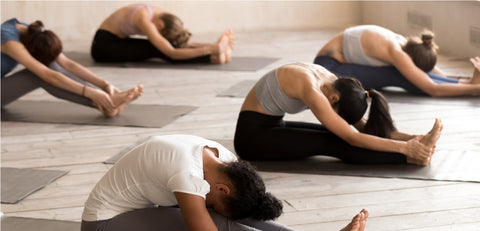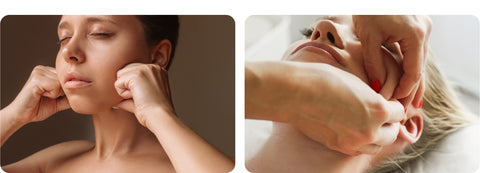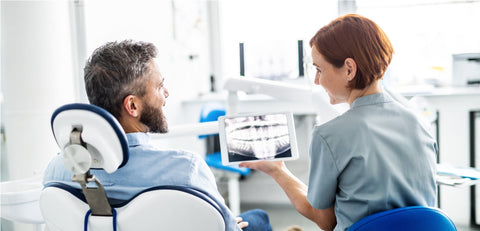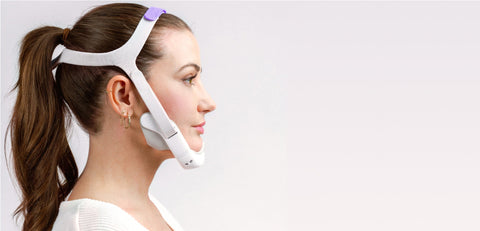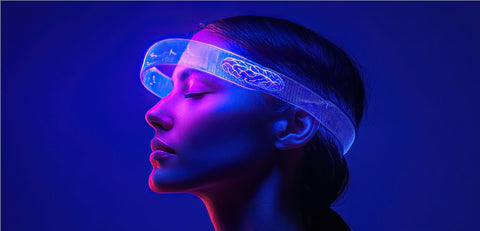Bruxism, or teeth grinding, is a common disorder that can lead to dental and muscular complications. Understanding the different treatment options is essential to effectively manage this problem. This article explores the treatments available for bruxism, focusing on the most effective and innovative approaches.
Meditation: A Soothing Approach to Bruxism
Meditation has proven to be a particularly promising technique for reducing bruxism, as it helps reduce stress and anxiety, factors often associated with teeth grinding[1].
Recommended Meditation Techniques
- Mindfulness meditation
- Body scan
- Progressive muscle relaxation
These techniques help develop better body awareness, allowing you to identify and release tension in the jaw. A study published in the Journal of Oral Rehabilitation showed that regular practice of yoga and meditation can significantly reduce the symptoms of bruxism[2].
Yoga: combining relaxation and muscle strengthening
Yoga combines breathing exercises, physical postures and meditation, offering a holistic approach to combat bruxism.
Beneficial Yoga Poses
- Lion pose (Simhasana)
- The pincer pose (Paschimottanasana)
- Fish Pose (Matsyasana)
These postures promote relaxation of the jaw and neck muscles, while improving overall posture, which can indirectly reduce bruxism[3].
Music therapy: a melody against teeth grinding
Music has a recognized calming power, capable of reducing stress and muscle tension. A study published in the Journal of Orofacial Pain showed that listening to relaxing music before bedtime can decrease the activity of nocturnal bruxism[4].
Recommended types of music
- Classical music
- Sounds of nature
- Ambient music
It is recommended to listen to these songs for 30 minutes before bedtime to maximize their relaxing effects.
Massages: Relaxing muscles to relieve bruxism
Targeted massages of the masticatory muscles and neck can significantly reduce muscle tension associated with bruxism.
Effective massage techniques
- Pressure point massage
- Deep massage of the jaw muscles
- Self-massage with relaxation exercises
These techniques, practiced regularly, can help release accumulated tension and reduce the frequency of bruxism episodes[5].
Physical activity: a natural outlet for stress
Regular physical activity helps reduce stress and anxiety, which are triggers for bruxism.
Recommended sports
- Running
- Swimming
- Bike
These aerobic activities promote the production of endorphins, hormones of well-being, thus helping to reduce stress and, consequently, bruxism.
Bruxless: technological innovation against bruxism
Faced with the complexity of bruxism, innovative solutions such as Bruxless are emerging to offer a more targeted and personalized approach. Bruxless positions itself as the most advanced solution on the market to combat bruxism.
Advantages of Bruxless
- Precise detection of bruxism episodes
- Real-time detection for immediate treatment
- Personalized monitoring of the evolution of bruxism
Bruxless combines cutting-edge technology and a therapeutic approach to offer a complete solution to people suffering from bruxism.
Conclusion: a multidimensional approach
Combating bruxism requires a holistic approach, combining various activities and techniques. From meditation to yoga, music therapy and physical activity, each method brings its own specific benefits. Integrating innovative solutions like Bruxless into this multidimensional approach opens up promising new perspectives for the treatment of bruxism.
By adopting these different practices and staying abreast of Bruxless technological advances, people suffering from bruxism can hope for a significant improvement in their condition and quality of life.
[1] Lobbezoo, F., et al. (2018). “Bruxism defined and graded: an international consensus.” Journal of Oral Rehabilitation, 45(11), 837-844.
[2] Wieckiewicz, M., et al. (2017). “Reported concepts for the treatment modalities and pain management of temporomandibular disorders.” Journal of Headache and Pain, 18(1), 111.
[3] Gomes, CA, et al. (2014). "The effects of massage therapy on sleep quality of patients with fibromyalgia syndrome." Sleep Medicine, 15(5), 542-550.
[4] Jadidi, F., et al. (2013). "Effect of contingent electrical stimulation on jaw muscle activity during sleep: a pilot study with a randomized controlled trial design." Acta Odontologica Scandinavica, 71(5), 1050-1062.
[5] Manfredini, D., et al. (2015). “Management of sleep bruxism in adults: a qualitative systematic literature review.” Journal of Oral Rehabilitation, 42(11), 862-874.
